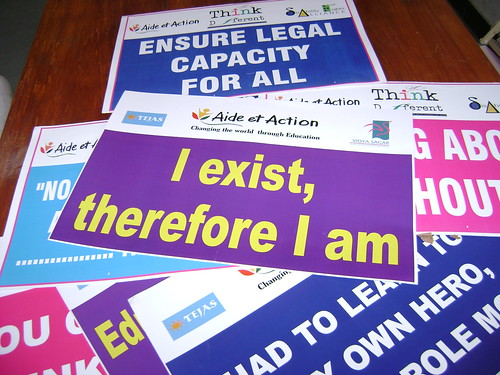Autism: Causes & Presentation
Autism is a distinct brain damage disorder that produces a characteristic range of behavioral abnormalities.
They include:
- Disturbances in the rate of appearance of physical, social and language skills.
- Abnormal responses to sensations. Any one or a combination of senses or responses are affected: sight, hearing, touch, pain, balance, smell, taste, and the way a child holds his body.
- Speech and language are absent or delayed while specific thinking capabilities might be present.
- Abnormal ways of relating to people, objects and events.
Autism occurs by itself or in association with other disorders which affect the function of the brain such as viral infections, metabolic disturbances, and epilepsy.
It is important to distinguish autism from retardation or mental disorders since diagnostic confusion may result in referral to inappropriate and ineffective treatment techniques. The severe form of the syndrome may include extreme self-injurious, repetitive, highly unusual and aggressive behavior. Special educational programs using behavioral methods have proven to be the most helpful treatment.
Behavior of an Autistic Person:
Autistic children display unusual behavior. A typical autistic child’s behavior is likely to include some of the following:
Clinical Features of Autism:
| Spinning | Repetitive behavior (preservation). |
| No Speech | Balancing, e.g. standing on a fence. |
| Flapping hands | Behavior that is aggressive to others. |
| Walking on tiptoes | Lack of interaction with other children. |
| Lack of eye contact | Extreme dislike of touching certain textures. |
| Self-injurious behavior | Desire to keep objects in a certain physical pattern. |
| Lack of interest in toys | Desire to follow set patterns of behavior/interaction. |
| Dislike of being touched | Treating other people as if they were inanimate objects. |
| Non-speech vocalizations | Delayed echolalia: repeating something heard at an earlier time |
| Preoccupation with hands | Confusion between the pronouns “I” and “You” |
| Lack of response | To people Echolalia: speech consisting of literally repeating something heard. |
| Extreme dislike of certain foods | Either extremely passive behavior or extremely nervous, active behavior. |
| Delayed development of speech | When picked up, offering no “help” (“feels like lifting a sack of potatoes”). |
| Extreme dislike of certain sounds | “Islets of competence”, areas where the child has normal or even advanced competence. Typical examples include drawing skill, musical skill, arithmetic, calendar arithmetic, memory skills, perfect pitch. |
Etiology of Autism:
There is no theory of the cause of autism which everyone has found convincing. There may be multiple causes. Thus we will review some of the proposed causes. Most researchers are absolutely convinced that the cause is biological rather than psychological. Bernard Rimland in his book Infantile Autism (1965) cited the following evidence for a biological genesis and against the idea that parents cause their children to be autistic:
- Some clearly autistic children are born to parents who do not fit the autistic parent personality pattern.
- Parents who do fit the description of the supposedly pathogenic parent almost invariably have normal, non-autistic children.
- With very few exceptions, the siblings of autistic children are normal.
- Autistic children are behaviorally unusual “from the moment of birth.”
- There is a consistent ratio of three or four boys to one girl.
- Virtually all cases of twins reported in the literature have been identical, with both twins afflicted.
- Autism can occur or be closely simulated in children with known organic brain damage.
- The symptomatology is highly unique and specific.
- There is an absence of gradations of infantile autism which would create “blends” from normal to severely afflicted.
Many time it was happened that The autism people brain are not work as per compare to normal people but they have some special quality we will never underestimate.If we will treat team well it will so help full them to growth.